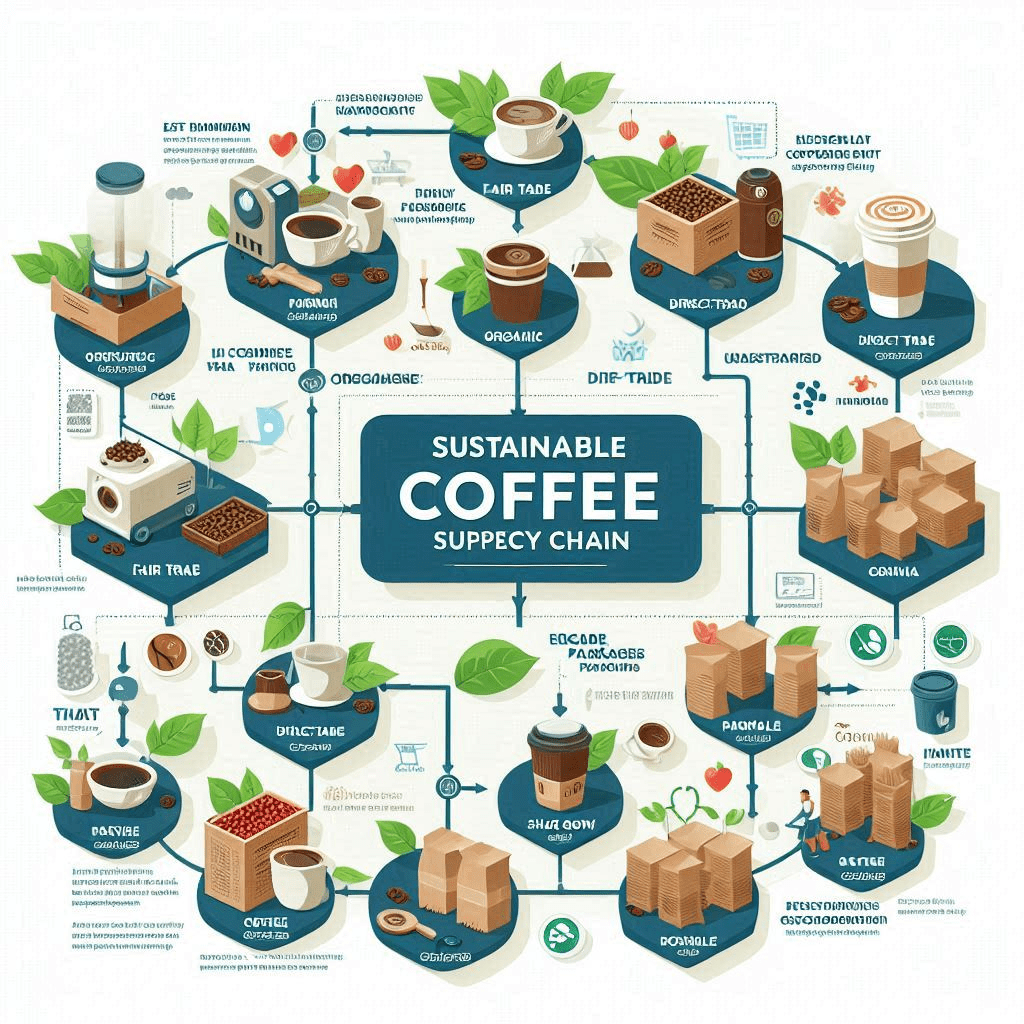I. Introduction
A. Brief overview of ISO 22000
It provides a comprehensive framework for organizations involved in the food supply chain to ensure the safety of their products. Covering aspects such as hazard analysis, control measures, and continuous improvement, ISO 22000 aims to create a systematic approach to food safety.
B. Importance of ISO 22000 in ensuring food safety
Ensuring food safety is paramount in the food industry. ISO 22000 plays a crucial role by providing a globally accepted standard that helps organizations identify and control food safety hazards. It establishes a foundation for building trust with consumers, mitigating risks, and meeting regulatory requirements.
C. Purpose of ISO 22000 training
The purpose of ISO 22000 training is to equip individuals and organizations with the knowledge and skills needed to implement and maintain a robust food safety management system. Training ensures that personnel are aware of the standard’s requirements, understand their roles in maintaining food safety, and contribute to a culture of continuous improvement within the organization. It is a key element in achieving and sustaining ISO 22000 certification.
II. Understanding ISO 22000
A. Explaining the ISO 22000 standard
ISO 22000 is a comprehensive standard that outlines the requirements for a food safety management system (FSMS). It is based on key principles and requirements designed to identify, prevent, and manage food safety hazards throughout the entire food supply chain. The standard emphasizes a systematic approach, incorporating elements such as hazard analysis, control measures, and continuous improvement to ensure the safety of food products.
B. Key principles and requirements
At the core of ISO 22000 are key principles like communication, system management, and prerequisite programs. These principles guide organizations in implementing effective control measures, establishing communication channels, and managing their FSMS efficiently. Requirements cover areas such as interactive communication, documentation, and continual improvement, ensuring a holistic approach to food safety.
III. Why ISO 22000 Training is Crucial
A. Ensuring compliance with food safety standards
ISO 22000 training is crucial for organizations aiming to comply with global food safety standards. Through training, personnel gain an understanding of the standard’s requirements, ensuring that processes align with the principles of ISO 22000. Compliance not only satisfies regulatory expectations but also fosters consumer trust by demonstrating a commitment to delivering safe and high-quality food products.
B. Mitigating risks in the food industry
The food industry is inherently vulnerable to various risks, including contamination and product recalls. ISO 22000 training equips individuals with the knowledge to identify and mitigate these risks effectively. By implementing preventive measures and adhering to the principles of hazard analysis and critical control points (HACCP), organizations can significantly reduce the likelihood of incidents that could harm both consumers and their reputation.
C. Improving overall food safety culture
ISO 22000 training contributes to the development of a strong food safety culture within an organization. By instilling a sense of responsibility and awareness among employees, a positive food safety culture becomes ingrained in daily operations. This cultural shift promotes proactive risk management, adherence to protocols, and continuous improvement, creating a safer environment for both consumers and the industry as a whole.
IV. Core Components of ISO 22000 Training
ISO 22000 places a significant emphasis on HACCP, a systematic preventive approach to food safety that identifies, evaluates, and controls potential hazards. Training in HACCP ensures that individuals understand how to analyze processes, identify critical control points, and implement measures to prevent or eliminate hazards at each stage of production.
A. Implementing effective food safety management systems
ISO 22000 training covers the implementation of robust food safety management systems. This includes creating and maintaining documented procedures, establishing effective communication channels, and integrating prerequisite programs to support the overall FSMS. Through training, organizations can streamline processes and enhance their ability to meet ISO 22000 requirements consistently.
B. Role of documentation and record-keeping
Proper documentation and record-keeping are integral to ISO 22000 compliance. Training emphasizes the importance of maintaining accurate records to track critical information related to food safety. Individuals learn how to create, manage, and update documentation effectively, ensuring transparency, traceability, and accountability throughout the food supply chain.
V. Benefits of ISO 22000 Training
A. Enhancing consumer confidence
ISO 22000 training contributes to the creation of safer food products, enhancing consumer confidence. When consumers know that a company follows internationally recognized food safety standards, they are more likely to trust the quality and safety of the products they purchase.
B. Legal and regulatory compliance
ISO 22000 training ensures that organizations stay informed about and compliant with relevant food safety laws and regulations. This knowledge is crucial for avoiding legal issues, penalties, and reputational damage. Training helps personnel understand their roles in maintaining compliance and proactively addressing regulatory changes.
VI. ISO 22000 Training Process
A. Identifying training needs
Before implementing ISO 22000 training, organizations must identify specific training needs. It involves assessing the existing knowledge and skills of employees, understanding the requirements of ISO 22000, and determining the areas where additional training is necessary.
B. Designing and implementing the training program
Once training needs are identified, organizations can design and implement a tailored training program. This may include classroom sessions, online courses, workshops, and practical exercises to ensure that participants grasp the principles of ISO 22000 and their application in real-world scenarios.
C. Monitoring and evaluating the effectiveness of training
Continuous monitoring and evaluation are essential components of ISO 22000 training. Organizations should assess the effectiveness of the training program by gathering feedback, conducting assessments and measuring changes in behaviour and performance. This iterative process allows for adjustments and improvements to enhance the overall impact of the training.
VII. Choosing the Right ISO 22000 Training Program
A. Accredited training providers
Selecting accredited training providers is crucial for ensuring the quality and credibility of ISO 22000 training. Organizations should choose programs offered by recognized accreditation bodies, guaranteeing that the training aligns with industry standards and best practices.
B. Online vs. in-person training options
ISO 22000 training programs are available in various formats, including online and in-person options. The choice between these formats depends on organizational needs, budget considerations, and the preferred learning styles of participants. Online training offers flexibility, while in-person sessions provide direct interaction and engagement.
C. Tailoring training to specific industry needs
Effective ISO 22000 training should be tailored to the specific needs of the industry in which an organization operates. Whether in food production, distribution, or retail, customization ensures that training addresses industry-specific challenges, scenarios, and regulations, maximizing its relevance and impact.
VIII. Tips for Successful ISO 22000 Certification
A. Preparation strategies for the certification process
Achieving ISO 22000 certification requires thorough preparation. Organizations should establish a roadmap, conduct internal audits, and ensure that all personnel are adequately trained and informed about the certification process. A well-prepared organization is more likely to undergo a smooth certification audit.
B. Maintaining compliance and continuous improvement
ISO 22000 is not a one-time achievement but an ongoing commitment to food safety. Training should emphasize the importance of maintaining compliance with the standard and continually seeking opportunities for improvement. By fostering a culture of continuous improvement, organizations can stay ahead of evolving food safety challenges.
IX. Conclusion
A. Recap of the importance of ISO 22000 training
ISO 22000 training is a cornerstone in the journey toward ensuring food safety and achieving certification. It equips individuals and organizations with the knowledge and skills necessary to navigate the complexities of the food supply chain, comply with international standards, and foster a culture of continuous improvement.
B. Encouraging businesses to invest in food safety education
The conclusion emphasizes the significance of investing in food safety education as a strategic decision for businesses. By prioritizing ISO 22000 training, organizations not only meet regulatory requirements but also gain a competitive edge, build consumer trust, and contribute to the overall advancement of the food industry.
C. Closing thoughts on the impact of ISO 22000 on the food industry
In closing, reflections on the broader impact of ISO 22000 on the food industry can be shared. The standard not only elevates individual organizations but also contributes to the collective improvement of global food safety practices, ultimately benefiting consumers and stakeholders across the supply chain.










